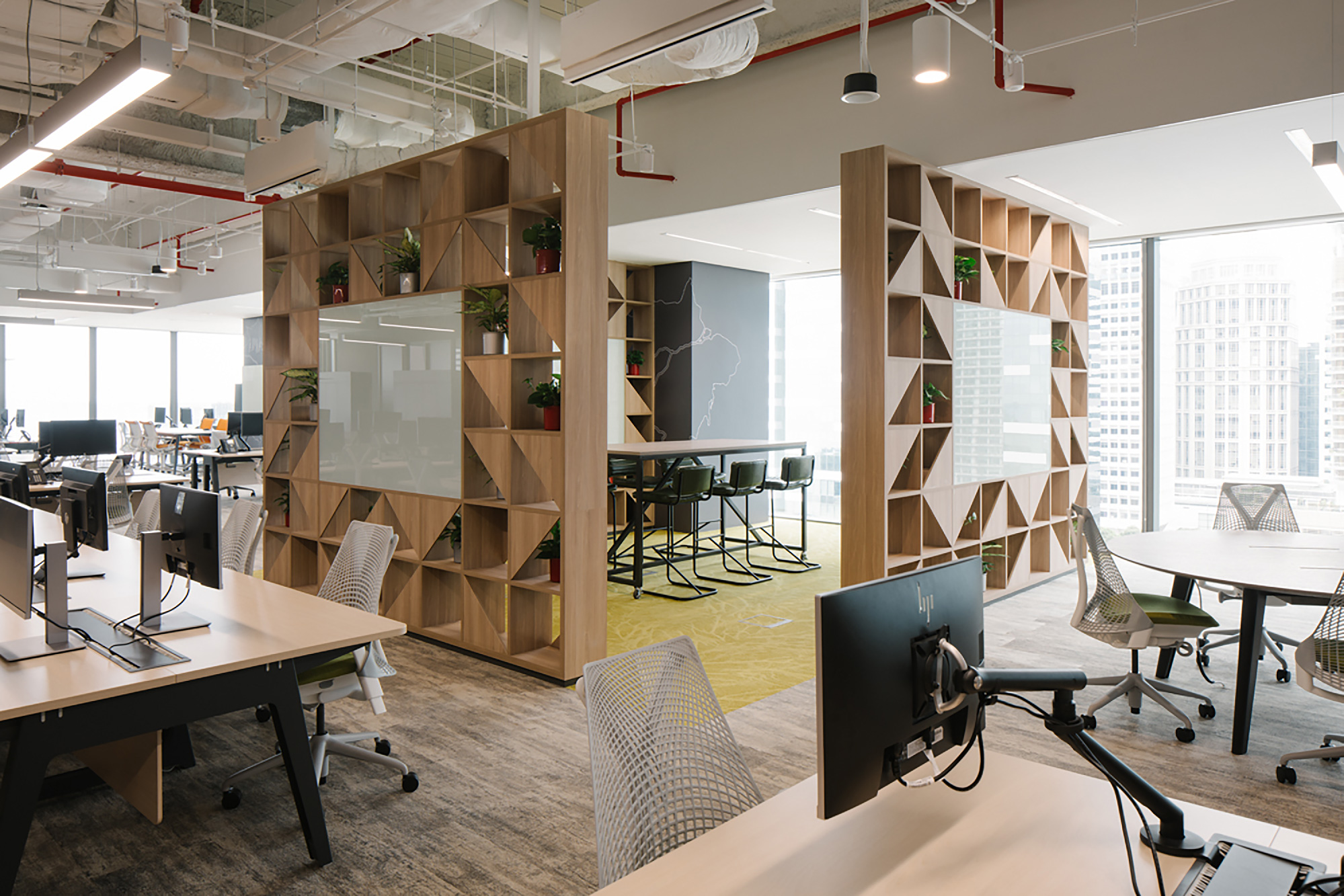
How Design Shapes Diversity and Inclusion Culture in the Workplace
As the world becomes more interconnected, workplaces are becoming increasingly diverse. Diversity and inclusion are no longer optional in today's global marketplace, but a necessary component of any successful business. Inclusive workplaces foster a sense of belonging and make employees feel welcome regardless of their backgrounds. When employees feel valued and respected, they are more likely to be engaged, productive, and motivated. Diverse perspectives can also lead to more creative and innovative solutions, as individuals with different backgrounds and experiences bring unique ideas to the table. To expand more upon the importance of diversity and inclusion here are a few reasons and design solutions for designing and building an inclusive and diverse Office space.
Agile Offices are the new norm
The removal of hierarchical barriers and the adoption of a no-dedicated desk policy can promote hot-desking, collaboration, and spur-of-the-moment innovations. However, many open-plan offices may not meet the individual needs of all employees. Workplace designs need to account for both schools of thought. To achieve inclusive office design, it's important to foster a sense of community and collaboration among teams, making it clear that their contributions are valued. This involves careful consideration of design elements, such as creating a flexible and adaptable floor plan that prioritizes engagement, communication, and creativity. Organisations that demonstrate trust in their employees by allowing them to work from anywhere often experience improved outcomes. This can be achieved through flexible work arrangements and other practices that empower employees. Additionally, providing comfortable workspaces that minimize stress can enhance employee performance.

Prudential's office in Singapore exemplifies its focus on employee well-being and incorporates agile workflow principles into its workplace designs. The office interior features minimal enclosed workspaces and adaptable office furniture, along with a unique feature - four cocoon-shaped timber domes that house workstations and collaborative zones. These domes are inspired by the protective shape of a seed pod and represent the organization's commitment to protecting an agile community. By involving employees in the design process, the company has created a workplace where they feel valued and heard, contributing to the psychological safety aspect of the workplace culture.
The synergy between Employees and Organisational Culture
Organisational culture plays a vital role in shaping the work environment for employees. It encompasses the beliefs, values, and principles that guide the behaviour of the people within the organisation. When these values resonate with the employees, they feel a sense of belonging, leading to a more cohesive work culture. Organisations that foster a strong sense of culture can enhance employee motivation, engagement, and productivity. A positive work culture not only attracts and retains diverse talent but also enhances collaboration and innovation. By aligning the organisational culture with the values and perspectives of employees, organisations can create a sense of unity and shared purpose that enhances the overall work environment.
Moreover, organisational culture influences the behaviours and interactions among employees. When a company embraces inclusivity, respect, and appreciation for diverse cultures, it creates an environment where employees feel valued and respected. This, in turn, contributes to higher levels of job satisfaction and fosters a positive atmosphere where individuals can thrive. This diversity of thought and perspective paves the way for innovation, problem-solving, and adaptability, enabling the organisation to thrive in an ever-evolving business landscape.

The Prudential Office in Singapore places great emphasis on cultural transformation. To facilitate this transformation, the company adopted a "Trust in Change" strategy and sought the assistance of Space Matrix. The journey involved conducting workshops, brainstorming sessions, and activities that helped the organization gain a better understanding of the workforce's needs. These insights were crucial in creating the office design concept of "Embracing Change."
Making Technology Accessible is crucial for Organisational Success
Technology is an integral part of modern office culture, and it's essential to ensure that all employees can access and use it. To promote accessibility and inclusion, companies should consider providing technology that is accessible to employees with disabilities. For example, providing screen readers, text-to-speech software, and captioning services can help employees with visual or hearing impairments to access and participate in digital communications. Additionally, companies can ensure that their website and other digital platforms are accessible to all users by following web accessibility standards.
Meeting rooms are a critical component of any office space, but they can also be a source of exclusion if not designed thoughtfully. To create more inclusive meeting rooms, companies should consider incorporating features such as video conferencing capabilities for remote workers or employees with disabilities, different types of seating options to accommodate different physical abilities and preferences, diverse artwork and decorations that represent a variety of cultures and perspectives, and gender-neutral restroom facilities. Circadian lighting systems that mimic the natural patterns of daylight can provide a more comfortable experience to users and positively impact their well-being, mood, and productivity. By designing meeting rooms that are accessible and welcoming to all employees, companies can create a more inclusive office culture.
Diversity and inclusion are essential for creating a positive office culture and design. By embracing diversity and inclusion, companies can create a workplace where all employees feel valued and respected, leading to increased engagement, productivity, and motivation. Are Diversity and Inclusion essential values for your organisation as well? Our experts can help you build a workplace environment where all your employees can feel like they belong. Contact us today!
